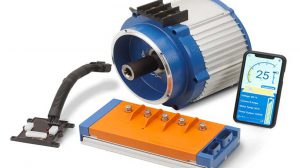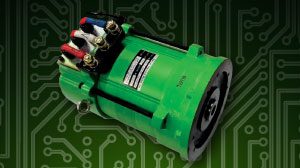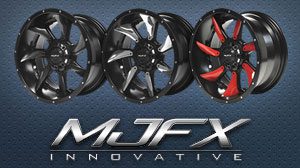By: Matt Vallez
This month, let’s do some comparing; I am sure all of you have heard the phrase; “let’s compare apples to apples” well it sounds good and everybody uses this analogy to compare whatever it is they happen to be selling at the time. This month I will attempt to demystify the hocus-pocus around electric motors and controllers so we can compare the different brands. I will get us to a point where we are focusing on the real working attributes, not just the rating attributes, or marketing attributes of one electric DC motor manufacture to another, and one controller manufacture to another. Simply stated we will be comparing apples to apples.
Â
DC electric motors can be rated in different ways. The NEMA or the National Electrical Manufactures Association has established the standards for ratings of DC motors performed at test intervals of 2 minutes, 5 minutes and one hour. The one-hour rating is also considered the “continuous current rating” Then there is the peak ratting, this is a marketing rating only, designed to allow for tagging the motor with the higest horsepower possible. Imagine the peak rating as the maxim RPMs a new car engine is capable of hitting, say 6,000 RPMs. Above the 6,000 mark on the tachometer the numbers are all red because the engine of this new car is not designed to go that fast. So 6,000 RPMs are the peak. You would not operate that new car at 6,000 RPMs while driving around town. Now think of the continuous rating as the RPMs of the engine under normal driving conditions. The engine, of a new car will operate at between 1,500 and 2,5000 RPMs during normal driving conditions, this is equal to the “continuous current rating”. Now that we have a simple, understandable analogy to use for peak vs. continuous lets apply this in a practical way to rating our electric DC motors.
Â
Motors are rated differently depending on the manufacturer. Some manufactures use peak horsepower, which is their own marketing rating scale. As an example; a motor with a peak rating of 11-horsepower, the same motor will have a “continuous current rating” or one hour rating of 4 horsepower. With DC electric motors the rating that will allow us to compare apples to apples is the “continuous current rating”. The “continuous current rating” is at what horse power the motor can continue to run. That is most similar to the RPMs from the new car example we used above, at what RPMs the new car will operate at under normal driving conditions, not what the engine is capable of. GE motors in the Nivel catalog are all rated with a voltage, horse power and then @ a certain RPM. This is a “continuous current rating” the horse power given is something that is sustainable for one hour or continuous. Other manufactures may use different marketing methods to rate their motor products. Some are using much higher horsepower claims. These claims are based on peak performance, not a “continuous current rating”, thus not allowing a true apple to apples comparison using just the horse power numbers provided.
Â
Solid state speed controllers are a little different with their own set of rating stats. There is the momentary also known as the peak, 30 second, 1 minute, 90 second, the 2 minute, and the 60 minute also known as the continuous. Most of the OEM manufactures use the two minute rating of their controllers for their marketing. This is done because the 2-minute rating is beyond what would normally be required of the controller, whereas the momentary rating is maximum the controller will put out for a short amount of time, less than 30 seconds. The 2-minute rating is what Curtis, GE and Alltrax use to rate their controllers. When Alltrax states that their AXE4865 is a 650-amp controller, which means it is rated for two minutes at approximately 650 amps. This number is approximate and is usually rounded up to an even number close to the 2-minute actual. In the case of controllers the 2-minute rating is what you want to use so you are comparing apples to apples. Some controller manufactures, just like some motor manufacturers that are out there, want to give themselves an edge. One way is to use their peak rating as the specified numbers they do their marketing with. This makes it more difficult to compare these controllers with other controller manufacturers.
Â
The bottom line on this topic is be careful, do not believe all the stats from someone’s marketing literature. Make sure you get the “continuous current rating” when comparing DC electric motors and the “2-minute rating” when comparing controller manufactures s. By getting the real numbers, you will tell be able to know exactly what you are getting. You will then be able to make an informed decision comparing apples to apples.










